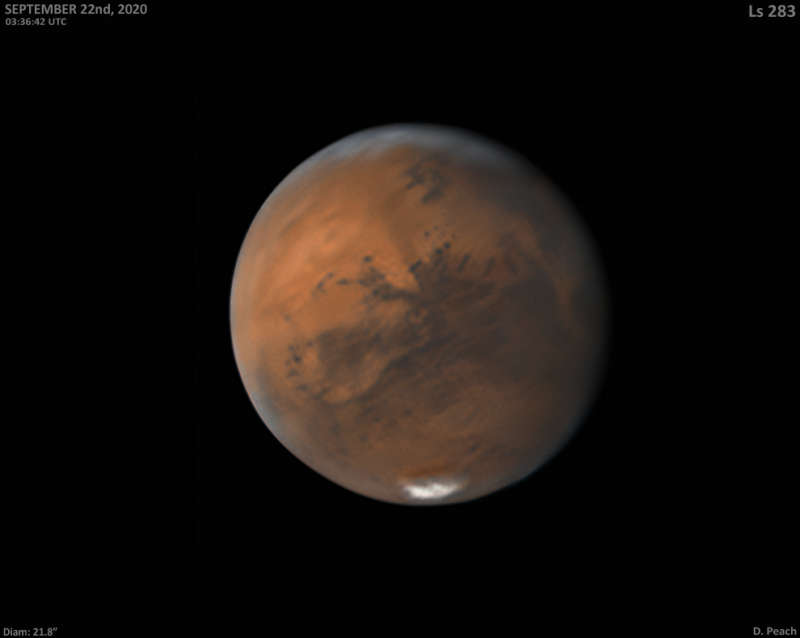Credit & Copyright: Damian Peach
Explanation:
As telescopes around planet Earth watch,
Mars
is growing brighter in
night skies, approaching its 2020 opposition on October 13.
Mars looks like its watching too in this view of
the Red Planet
from September 22.
Mars' disk is already near its maximum apparent size for
earthbound telescopes,
less than 1/80th the apparent diameter of a Full Moon.
The seasonally shrinking south polar cap is at the bottom and
hazy northern clouds are at the top.
A circular, dark albedo feature, Solis Lacus (Lake of the Sun), is just
below and left of disk center.
Surrounded by a light area south of Valles Marineris, Solis Lacus
looks like a planet-sized pupil, famously known as
The Eye of Mars
.
Near the turn of the 20th century, astronomer and avid
Mars
watcher Percival Lowell
associated the Eye of Mars with a conjunction of
canals
he charted
in his drawings
of the Red Planet.
Broad, visible changes in the size and shape of the Eye of Mars
are now
understood
from high resolution surface images to be due to
dust transported by winds in the thin
Martian atmosphere.
1999 2000 2001 2002 2003 2004 2005 2006 2007 2008 2009 2010 2011 2012 2013 2014 2015 2016 2017 2018 2019 2020 2021 2022 2023 2024 2025 |
Январь Февраль Март Апрель Май Июнь Июль Август Сентябрь Октябрь Ноябрь Декабрь |
NASA Web Site Statements, Warnings, and Disclaimers
NASA Official: Jay Norris. Specific rights apply.
A service of: LHEA at NASA / GSFC
& Michigan Tech. U.
|
Публикации с ключевыми словами:
Mars - Марс
Публикации со словами: Mars - Марс | |
См. также:
Все публикации на ту же тему >> | |
